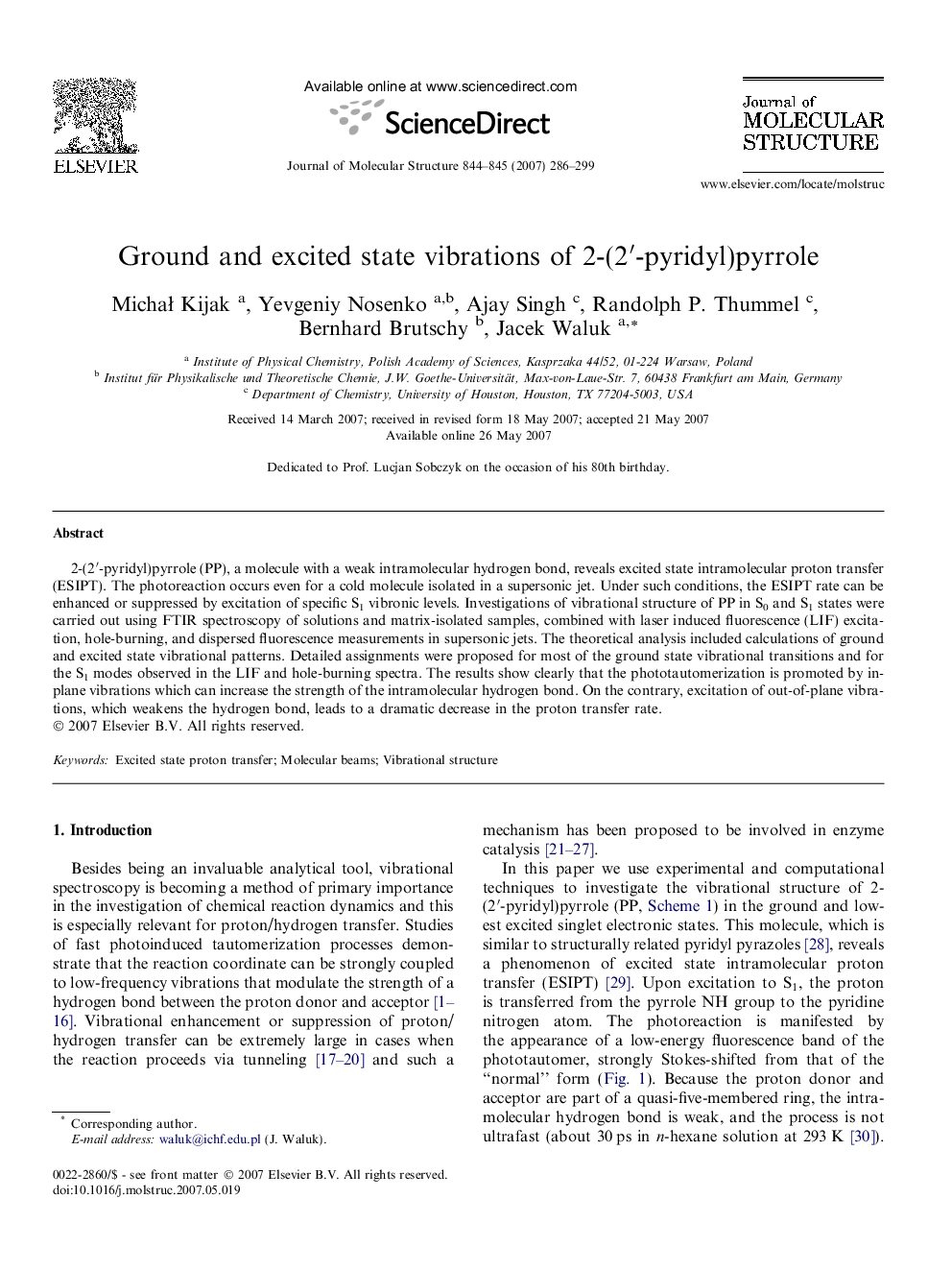| Article ID | Journal | Published Year | Pages | File Type |
|---|---|---|---|---|
| 1411813 | Journal of Molecular Structure | 2007 | 14 Pages |
2-(2′-pyridyl)pyrrole (PP), a molecule with a weak intramolecular hydrogen bond, reveals excited state intramolecular proton transfer (ESIPT). The photoreaction occurs even for a cold molecule isolated in a supersonic jet. Under such conditions, the ESIPT rate can be enhanced or suppressed by excitation of specific S1 vibronic levels. Investigations of vibrational structure of PP in S0 and S1 states were carried out using FTIR spectroscopy of solutions and matrix-isolated samples, combined with laser induced fluorescence (LIF) excitation, hole-burning, and dispersed fluorescence measurements in supersonic jets. The theoretical analysis included calculations of ground and excited state vibrational patterns. Detailed assignments were proposed for most of the ground state vibrational transitions and for the S1 modes observed in the LIF and hole-burning spectra. The results show clearly that the phototautomerization is promoted by in-plane vibrations which can increase the strength of the intramolecular hydrogen bond. On the contrary, excitation of out-of-plane vibrations, which weakens the hydrogen bond, leads to a dramatic decrease in the proton transfer rate.
